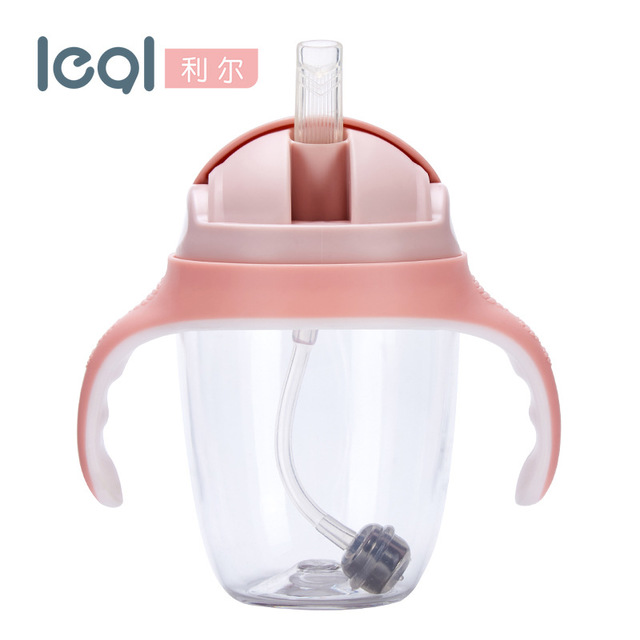Breast to sippy cup: How to Introduce a Sippy Cup to a Breastfed Baby (5 Easy Steps)
Posted onHow to Introduce a Sippy Cup to a Breastfed Baby (5 Easy Steps)
Is your baby old enough for a sippy cup but seems determined to breastfeed forever?
It may seem like an insurmountable obstacle when your baby is so stuck on breastfeeding. But that also means congratulations are in order — you did a great job breastfeeding. So great that now weaning may be more difficult than you anticipated.
Many of us moms have been in your shoes, and our combined experience can help get you through this. Before you give up all hope of a peaceful transition, let’s look at some tricks you can try as you introduce a sippy cup to your breastfed baby to make this easier for everyone involved.
What To Know Before Beginning
Every child is ready for sippy cups at different stages. Some are early learners and are ready as early as 6 months old. Others don’t show any signs of interest until they are 1 year old.
Take Note
If your child is on the later side of wanting to learn how to use a sippy cup, don’t worry. Many factors can play into their readiness, including having older brothers or sisters they’re trying to mimic.
But if they aren’t attempting to use a sippy cup and their first birthday is approaching, you should try to move things along. The American Dental Association says children should no longer use bottles after 12 months of age to prevent tooth decay (1).
Before you start the weaning process, there are a few things you should keep in mind:
- Buy a breast-like sippy cup: When you introduce a sippy cup to your breastfed baby, remember, they are used to the soft feel of your breasts. Switching to a hard-feeling sippy cup can be a big adjustment. Look for a cup with a breast-like feel, like the Philips Avent My Easy Sippy Cup.
- Try not to lose patience: Your baby is learning on the job, just like you are with this mothering stuff. You’ll both learn together, and you’ll get there eventually. Try not to sweat the small setbacks or the occasional temper tantrum.
- Get several kinds of sippy cups: Before committing to any particular kind of sippy cup, try a variety of types to determine which will work best for your baby.
- Watch out for mold: As you move along with this process, make sure you clean your sippy cups well. Depending on the sippy cup’s style, milk can get trapped in the crevices or valves, leading to mold formation. When you’re shopping for big-kid cups, look for cups with fewer spaces for milk to get trapped.
When you introduce a sippy cup to your breastfed baby, you have two main options:
- Go cold turkey: With this method, you cut your baby off the breast 100 percent, only giving them sippy cups. They’ll adjust in three or four days, but the downside to this method is you may get a lot of crying during that time. Unless you’re still pumping to put the breast milk in a sippy cup, it could also lead to clogged ducts for you (2).
- The weaning method: If you don’t want every night to turn into a waking nightmare, you can gradually cut back on the breastfeeding sessions or offer them at bedtime only.
That will help you both get some sleep. It also gives your baby a chance to adjust to the new feeding method at a slower and perhaps more comfortable pace.
Whichever method you choose, remember that breastmilk (or formula) should remain your baby’s main source of calories until age one. That doesn’t necessarily mean you have to use bottles until then, only that your baby still needs to take the same amount from the sippy cup that they were taking at the breast or from a bottle.
Editor’s Note:
Michelle Roth, BA, IBCLC
How to Introduce the Sippy Cup
Unless your child has older siblings they observe, or they’ve been eyeing your cup for some time, your baby may not be interested in drinking from a cup. Here are some steps you can take to get your child through this milestone.
1. Decide Which Method You’ll Use
Before you begin your battle, pick your strategy.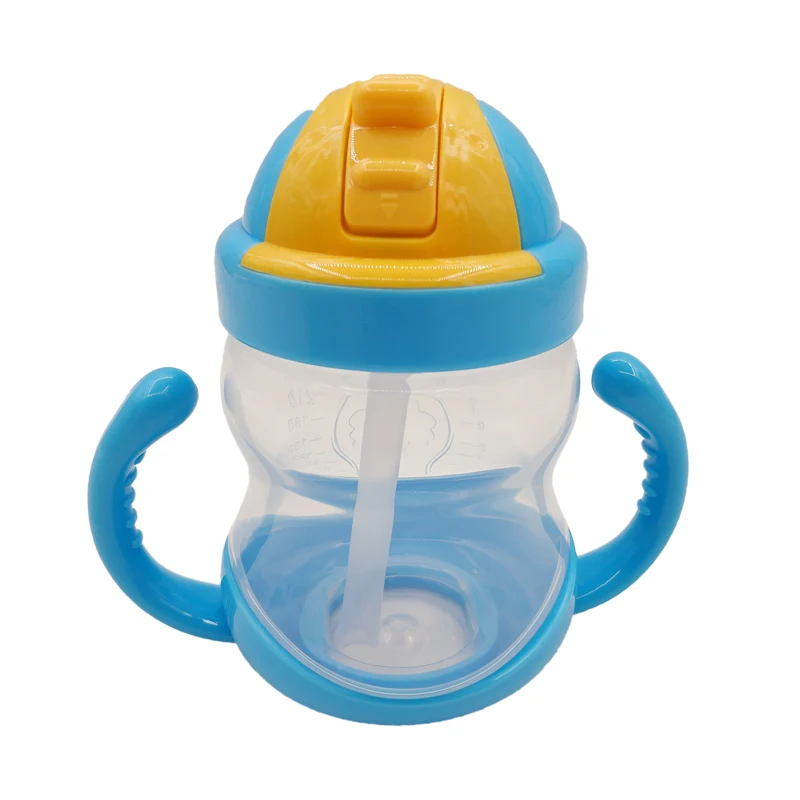
If you’re going cold turkey, you need to be firm and not give in. It can be difficult when your child is crying. And if you need your sleep, going cold turkey might not be the best method for you.
Even if you decide to make the move gradually and only breastfeed your baby at bedtime, you still need resolve. If you continue giving in to your child’s demands for a noontime breastfeeding session, you’ll confuse your child.
2. Teach Your Child To Use a Cup
Show your child how sippy cups work. Make sure they watch you get the breast milk from the refrigerator and pour it in.
The first time you hand them the sippy cup, you may have to show them what to do with it. If it has handles, show your child how to hold them correctly. If it doesn’t have handles, put their hands around the cup base. Show them they need to use two hands to hold it.
Then aim the spout of the cup toward their mouth if they don’t seem to know what to do with it. Once they taste the breast milk, they should become more interested in the cup.
It can be a struggle even to make it to this point, especially if you’re using a cup that requires active sucking. In this case, you might have to dip the tip of the spout in breast milk and rub it on your baby’s lips. That might be enough to spur them on to investigate further.
3. If One Cup Fails, Try Another
If you can’t get your baby to take the first sippy cup you try, despite repeated attempts, try another one.
Some babies hate the feel of certain cups. The flow might be too fast or too slow, or they just hate it for reasons you’ll never know. Let it go, and simply try another.
4. Let Them Play With the Cup
Although it’s fine to help your child get used to their new cup, get out of the picture instantly when they show any signs of wanting to try it independently.
It might go against your instincts, especially if you’re worried about a mess, but let them play around with the cup. Allow them to shake it up and bang it against the floor. Doing all those things helps them learn how best to use their cup and be comfortable with it.
Once they start liking the way it feels, they’ll forget all about breastfeeding.
5. Don’t Let Them Walk and Drink
Letting a child roam around while drinking from their sippy cup is a bad idea. If they fall while walking, it could jab their teeth or the roof of the mouth. Even if they’re using a soft spout, it will still hurt and might dull their enthusiasm for using their cup.
Plus, you should never let your baby fall asleep while drinking from their sippy cup because it can cause cavities.
Feedback: Was This Article Helpful?
Thank You For Your Feedback!
Thank You For Your Feedback!
What Did You Like?
What Went Wrong?
How to Introduce a Sippy Cup to a Breastfed Baby
Opinions
expressed by The Spoiled Mama Contributors are their own.
Discussing breastfeeding deserves a book on its own, a new mother often wonders whether she’s making all the right decisions that will ensure her bundle of joy receives all the nutrition needed from her breast milk. What’s the right diet during breastfeeding? Is there a safe tea to increase milk supply? Choosing the right breastfeeding bra, finding the perfect sore nipple cream and so on. Once all of those questions are sorted out (sort of), the inevitable question arrives, what happened after breastfeeding? What’s the deal with introducing a sippy cup to your baby?
If your baby is old enough to change from breastfeeding to a sippy cup or a straw cup, you have your plate full, as this leap does not always take place smoothly. You have many reasons to make things easier, probably the most important of them having a lot to do with preserving your child’s oral health.
Parents confront with a few issues when it comes to leaping from breastfeeding to sippy cups: the proper baby age for the leap, the type of sippy cup that ensures a comfortable transition for baby and parents, and the inherent hassle associated with the process.
The Basics of Sippy Cup Introduction
According to the American Dental Association, the best time in introducing sippy cup is around the 1-year-old birthday. However, experts do not put a pin on this, because it all depends on your baby. In other words, we will discuss the age issue in a few moments, as it is essential and you need to pay attention.
The type of sippy cup you need to start with is relatively simple to tackle: read this best sippy cups for toddlers review for starters. Professionally constructed, it comes with true-and-tested opinions, best features, child-centric and parent-centric features, pros, cons, conclusions, and recommendations. It is a perfect place to start, and it will give you a broader idea of what to expect from the hustle we mentioned.
Talking to mothers already using the sippy cups, reading forums, observing your child’s behavior about the sippy cups’ features you noted, and even asking your pediatrician are excellent ways to pick one or more sippy cups to ease your baby into using them.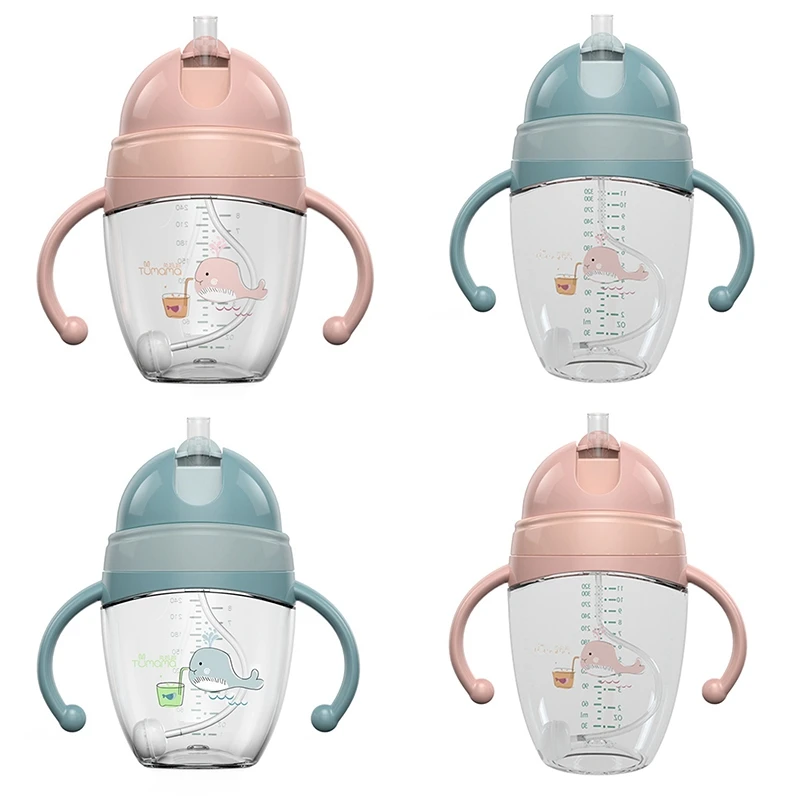
How to Introduce a Sippy Cup to Your Breastfed Child?
Now that the easy part is over, let us focus on tips, tricks, and actionable advice on how to help your child make the transition towards sippy cups in a manner that is comfortable and fun for both baby and parent. Before we begin, remember that some toddlers get the sippy cup idea in minutes; others need help, while others may not agree with it at all.
- Find a sippy cup with a soft, gum-safe, medical silicone-grade, comfortable spout. It will both mimic the softness of the breast and will help the toddler adjust to the cup easier, without a prolonged period of adjustment;
- As a result of the first suggestion, buy more sippy cups models. Some are almond-shaped, some mimic the roundness of the breast; some come with handles, and some not. Get the affordable ones and see which are your baby’s most likely favorites;
- Start the sippy cup training when the baby is awake, cheerful, and ready to take on the world.
You should avoid quenching the thirst of a child with a sippy cup when the child already displays a grumpy mood, is tired or hungry. If you try the sippy cup when the baby is moody, you should expect frustration and tears;
Source: BananaStock
- Show the baby how to raise the cup and tilt it so he/she can drink. This stage will require some patience on your part and some time but do not give up. If you picked a sippy cup with a flexible, soft spout, touch the baby’s lips or mouth roof with the spout tip to trigger the sucking reflex. You may need to hold the cup for drinking for a while, as small toddlers do not have their full motor skills developed. If the baby refuses the spout, dip it in breast milk to have a taste. It usually gets children interested;
- When you have older children, allow the old brother/sister show the little one how to use the sippy cup. The imitation game is quite fun for toddlers, and they might want to start playing with their older siblings;
- As we said, many babies get the right idea with the sippy cup in a matter of minutes.
However, you may see plenty of biting and chewing going on;
- On the contrary, some sippy cups are hard to deal with because they have spill-proof valves or the child needs to bite the straw to drink. If you want a smoother, less frustrating process, remove the valve or change the way the straw works to facilitate drinking;
- If the transition is a bit difficult, feed your baby in two steps: breastfeed for the first half of the process, then switch to the sippy cup containing breast milk, holding the baby just as you keep her when you breastfeed her.
Keep in mind that these are not fail-proof methods. Children are much smarter than we give them credit, and some will embrace the sippy cup as if it was yet another interesting fact about the world they love to discover and play with all the time. Some children will ignore it royally or bite through piles of spouts like bubble gum.
Before we leave you to your quest for the best sippy cups, a word of advice for moms.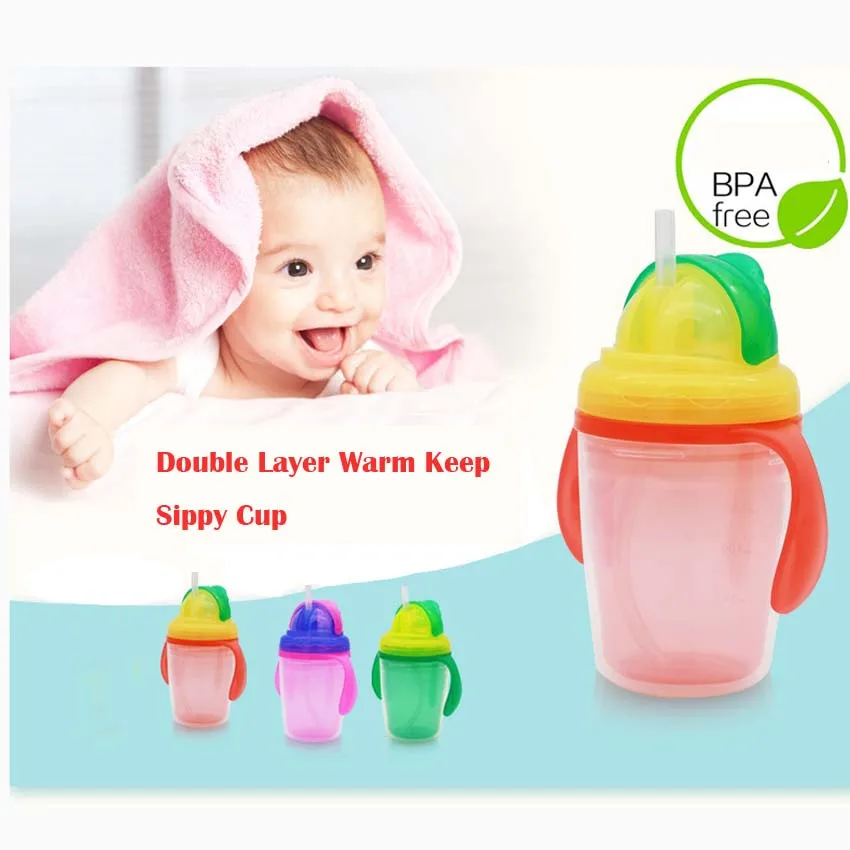
Source: Polka Dot Images
In case if you’re thinking about ‘going cold turkey’, by skipping the introduction and going straight to feeding your kiddo using a sippy cup, it might not be a smooth sail but it might also work (wink).
Share with us your experience in how to introduce a sippy cup to your child in the comment section below.
Contributor Bio:
Kelly Fowler is a full-time mommy and a co-founder of Sweetmomsblog.com, a blog where she provides useful baby care advice for every new parent.
When babies can use sippy cups, and how to transition from bottle to cup
-
Baby
-
Solids & Finger Foods
By Kandis Lake, R.N.
|
|
March 24, 2022
When transitioning your baby from a bottle or breastfeeding to drinking out of a cup, sippy cups can be a great tool.
Photo credit:
© Thinkstock / Zoonar
- When to introduce a sippy cup
- How to get your baby to use a sippy cup
- How to transition from bottle to cup
- What to serve in a sippy cup
- Choosing a sippy cup
- What to do if your baby won’t use a sippy cup
- Plastic sippy cup safety
A sippy cup is a training cup with a screw-on or snap-on lid and a spout or straw that lets your child drink without spilling. You can get models with or without handles, as well as different types of spouts.
Sippy cups can be a great way to help your baby transition from nursing or bottle-feeding to a regular cup.
When to introduce a sippy cup
You can give your baby a sippy cup when they start solid foods, around 6 months old. Signs your baby is developmentally ready for a sippy cup include being able to sit upright, having good neck control, and being interested in food.
To help prevent bottle rot and tooth decay, experts recommend you transition from bottles to a sippy cup when your child is 1, and then quickly transition to a straw cup or open cup before your child’s second birthday. Tooth decay can happen when a liquid other than water pools around a child’s teeth for a long period of time, or frequently throughout the day.
If your breastfeeding baby doesn’t use a bottle and seems ready for a sippy cup, you can skip the bottle and go straight to a sippy or even an open cup – no need for an additional transition.
How to get your baby to use a sippy cup
Some babies take to a sippy cup immediately, while others may take a while to get used to the idea. (Some kids never use one, and that’s also okay – more on that below.)
Here are some tips for getting your baby to use a sippy cup:
- Start off with one that has a soft, pliable spout. This will feel more familiar to your baby than a hard plastic spout.
- Show your baby how to raise the cup to their mouth and tip it up to drink. Show them that the spout is like a nipple by touching the tip of the spout to the roof of their mouth to stimulate the sucking reflex.
- Give it some time. Don’t worry if your baby doesn’t take to the sippy cup right away. Just wait a few days and try again.
- Shop around. There are all kinds of sippy cups, with all kinds of spouts. If one isn’t working, test-drive another to see if your baby likes it better.
- Start by offering a sippy cup during one meal a day. The following week, offer it during a second meal, and so on until your baby is only drinking from a sippy during meals.
(More on this strategy below.)
- Be consistent. If you’ve started giving your baby a sippy cup at a specific time (say, during lunch), don’t switch back to the bottle during that time.
- Give your child plenty of encouragement: Drinking out of a sippy cup means they’re a big kid now! Make it a celebration whenever they use one.
How to transition from bottle to cup
When you’re ready for your toddler to give up bottles, you can help them make the transition from a bottle to a sippy, open, or straw cup. Here’s how to do it:
- The earlier you start the transition, the easier it will likely be. The longer a baby drinks from a bottle, the more attached they’ll be to it as a source of security and comfort. If you introduce the sippy when your baby starts eating solids around 6 months, your baby might be ready to leave the bottle behind by the time they’re a year old.
- Spill-proof sippy cups with soft spouts that your baby has to suck on are similar to bottles, so they can help the transition.
But spill-proof sippy cups can be as damaging to baby teeth as bottles, so try to only use them when your baby is first starting to use cups.
- Start by getting rid of one bottle at a time. For example, skip the morning bottle and instead feed them breakfast in their highchair with some solid food and some breast milk or formula in a sippy. But keep the rest of the day’s bottles the same; that way, if they ask for a bottle, you can tell them they’ll get one later.
- Take it one step at a time: Try cutting one bottle one week, then another the following week, and so on.
- Make your baby’s nighttime bottle the last to go. When you’re ready for your child to say goodbye to the bedtime bottle, keep every other part of their bedtime routine (such as a bath or reading books) the same, but give them a sippy cup at dinner or with a bedtime snack instead of the bottle. If your child is thirsty before bed, you can give them water in a sippy cup.
- Out of sight, out of mind: Put bottles away where your child can’t see them and be reminded of them.
- If your child keeps asking for a bottle, find out why they really want it: Are they thirsty or hungry? Looking for comfort? Bored? Then offer a different solution: Milk from a sippy or a snack if they’re hungry or thirsty; a cuddle with you or a lovey if they need comforting; or a fun game to distract them if they’re bored.
What to serve in a sippy cup
You can give babies under a year old breast milk, formula, or water (if they’re at least 6 months old) in a sippy cup.
Once your child is a year old, you can give them juice or cow’s milk in the sippy, though it’s best to only let them drink juice or milk during meals and snack time. Letting your child sip on milk or juice all day can lead to tooth decay from the sugars in the drink. For the same reason, don’t let your child take a sippy cup of juice or milk to bed.
Clean the cup thoroughly (especially the lid and plastic stopper) between uses. Liquid can get trapped in the nooks and crannies of a sippy cup and valve, leading to bacteria and mold.
Choosing a sippy cup
The best sippy cups for your child’s teeth are ones that a child sips from, rather than sucks from. Whenever your baby has to suck liquid out (such as from a bottle or a sippy cup with a valve) liquid is more likely to pool around their teeth and cause tooth decay.
Look for sippy cups that have a hard spout or straw, two handles, a weighted bottom to keep it upright, and no valve controlling the flow of the liquid.
The best option for your child’s teeth is a regular cup. A sippy cup may help you transition your child from a bottle to a regular cup, and prevent spills as they improve their motor coordination, but it’s best used temporarily, just to make the leap from bottles to regular cups.
As soon as you think your child can handle it, try switching to a regular cup. Most toddlers can manage a two-handled open cup by the time they’re 2 years old.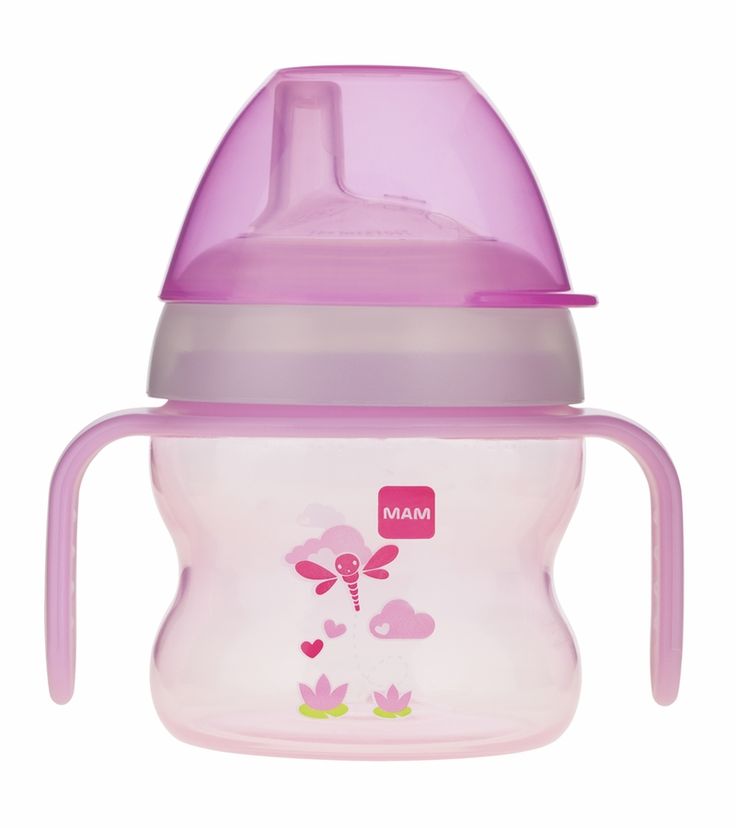
What to do if your baby won’t use a sippy cup
Babies have all kinds of reasons for rejecting sippy cups. If your baby refuses the sippy but you want them to use one, here are some ideas:
- Dip the spout into breast milk or formula before giving it to your baby.
- Switch halfway through a feeding. If they drink from a bottle, give them half of their formula or breast milk in the bottle. When it’s empty, switch to the sippy cup for the second half of the feeding. (Continue to hold them as you do when they’re bottle-feeding.)
- Modify the sippy spout. Some cups have valves that are so effective at keeping the liquid from spilling that it’s a lot of work to drink from it. If your baby sucks on the sippy spout but doesn’t get anything, try taking out the valve that controls the flow.
- Try other drinks. Some babies will drink water from a sippy cup, but not breast milk or formula.
- Show your baby how it’s done. Get a sippy and let your baby see you drink from it, or have a sibling drink from a sippy in front of the baby.
Sometimes making a little sucking noise is all it takes to inspire a baby to start sucking. Then, give your baby their own cup to mimic your actions with.
If your child still refuses to use a sippy cup, that’s okay – there’s no law saying they have to use one. You can skip straight to teaching your child how to use a regular cup.
Here are some tips for teaching children to use regular cups if you’re skipping sippy cups:
- Start with small amounts of liquid. That way, if your child spills, there isn’t as much to clean up. If they drink it all, you can always pour more.
- Choose a cup with a weighted bottom to prevent the cup tipping over and spilling.
- Only allow your child to drink from their cup at the table, especially with drinks other than water.
- If you want to encourage regular cup use but don’t want to worry about spills around the house, your child could drink from a regular cup at the table and have drinks of water from a water bottle or cup with a straw when they’re away from the table.
Plastic sippy cup safety
Some types of plastic used to make sippy cups and bottles can have chemicals like phthalates and bisphenol S (BPS) that can have health risks if they get into food. Phthalates, for example, are believed to increase childhood obesity and can impact cardiovascular health, and bisphenol S can affect puberty, fertility, and body fat.
Exposing plastic to heat is one way that chemicals can leak into food. To make plastic products safer for use, avoid heating them up in the microwave or washing them in the dishwasher. Also avoid using plastic cups that are scratched, cracked, or otherwise damaged.
One easy way to tell what type of plastic a product is made of is by checking the recycling code (the number inside the recycling symbol, usually on the bottom of an item). Avoid using plastics with recycling codes 3 (phthalates), 6 (styrene), and 7 (bisphenols), unless the plastics are labeled as «biobased» or «greenware.»
If they’re available to you, look for cups made out of material other than plastic, such as stainless steel, glass, food-grade silicone, or bamboo.
Sources
BabyCenter’s editorial team is committed to providing the most helpful and trustworthy pregnancy and parenting information in the world. When creating and updating content, we rely on credible sources: respected health organizations, professional groups of doctors and other experts, and published studies in peer-reviewed journals. We believe you should always know the source of the information you’re seeing. Learn more about our editorial and medical review policies.
American Academy of Pediatrics. 2011. Discontinuing The Bottle. https://www.healthychildren.org/English/ages-stages/baby/feeding-nutrition/Pages/Discontinuing-the-Bottle.aspx [Accessed March 2022]
American Academy of Pediatrics. 2015. How to Prevent Tooth Decay in Your Baby. https://www.healthychildren.
American Dental Association. Undated. Training Cups and Your Toddler’s Teeth. https://www.mouthhealthy.org/en/babies-and-kids/training-cups [Accessed March 2022]
Benioff Children’s Hospitals. Undated. FAQ: Baby Bottle Weaning. https://www.ucsfbenioffchildrens.org/education/faq-baby-bottle-weaning [Accessed March 2022]
Nemours Foundation. 2018. Stopping the Bottle. https://kidshealth.org/Nemours/en/parents/no-bottles.html [Accessed March 2022]
American Academy of Pediatrics. 2021. Food Additives: What Parents Should Know. https://www.healthychildren.org/English/healthy-living/nutrition/Pages/Food-Additives.aspx [Accessed March 2022]
U.S. Food and Drug Administration. 2018. Bisphenol A (BPA): Use in Food Contact Application. https://www.fda.gov/food/food-additives-petitions/bisphenol-bpa-use-food-contact-application [Accessed March 2022]
Yang C, et al.
Cleveland Clinic. 2020. How to Start Weaning Your Baby Off Bottle and Sippy Cups. https://health.clevelandclinic.org/say-goodbye-to-bottles-and-sippy-cups/ [Accessed March 2022]
Thoene M, et al. 2020. Bisphenol S in Food Causes Hormonal and Obesogenic Effects Comparable to or Worse than Bisphenol A: A Literature Review. Nutrients 12(2): 532. https://www.ncbi.nlm.nih.gov/pmc/articles/PMC7071457/ [Accessed March 2022]
Show more
advertisement | page continues below
advertisement
Featured video
All pregnancy, parenting, and birth videos >
0004
By clicking the «Continue» button, I accept the privacy policy
There are two factors that affect what happens when you try to bottle-feed your baby: the baby’s response and your response, both influencing your brain and your body.
However, let’s start with the child. The process of weaning looks the same for a baby who has never seen a bottle, and for one who used it once seven months ago, but now seems to have forgotten how to drink from it. I get tons of emails and lots of calls from women who are struggling with both issues. Here is one such message:
“I am the mother of a six month old boy.
Twelve weeks! How much persuasion and coaxing — and as a result, disappointment for both you and the child! Obviously, this mom is in no hurry. Imagine if she had to go to work like so many others! For example, I remember little Bart’s mother who breastfed him for three months and then called me: “I’m going to go to work in three weeks and would like to stop breastfeeding in the morning, afternoon and evening, and during the rest of the appointments food to give a bottle with a mixture.
Whether you’re thinking about switching to bottle-feeding only or want to breastfeed only a few times a day, my advice to you is to make sure you’re ready for it, pull yourself together, be determined.
Find a nipple that is more like your nipple on your breast. Some ardent breastfeeding experts warn of the risk of improper nipple latch and suggest that bottles should not be given until three or six months of age (depending on which book you read) for this reason. If there is a problem, it will be the confusion of the baby due to the flow of milk, and not because of the shape of the nipple. Choose the right one, and if the baby accepts it, then you can no longer stick to alternate feeding from each breast. It will be enough if the baby gets used to the bottle — this also eliminates the need for experimenting with nipples until the baby begins to spit, choke and burp. In this case, buy a slow milk nipple that is adapted to sucking movements and that is different from the standard ones, from which milk continues to come out even after the child has already stopped eating.
Have your first bottle feeding of the day when your baby is most hungry. I do not agree with those parents who suggest starting this when the baby is not very hungry. What motivates him to take the bottle, if not hunger? Do not expect that everything will go smoothly for you, and get ready for resistance from the child — he will also be uncomfortable.
Never force a child to take a bottle. Look at it through the eyes of a baby. Imagine what it’s like to feel a cold rubber nipple in your mouth after several months of touching warm human flesh for the first time. To give it some charm, pour warm water over it. Insert it quietly into your baby’s mouth and wiggle it lightly on his lower lip to trigger the sucking reflex. If he does not eat within five minutes, stop so that the baby does not get disgusted. Wait about an hour and try again.
Try again every hour on the first day. Be persistent. If a mother says that she tried to do this for twelve weeks, or even four, what she said does not at all indicate that she stubbornly continued to achieve the goal.
Have a father, grandmother, friend or nanny try too, but you should be the first to start. Some babies take a bottle from other people’s hands, but may categorically refuse to accept it from their mother. You can use this fact. But that’s not what you want to encourage. Bottle training requires flexibility. Let’s imagine that you got somewhere with the baby and no longer breastfeed him. You won’t call your dad or grandma every time! In order for a child to get used to a bottle, you must also give it to him.
Expect a hunger strike and prepare for it. If the baby refuses the bottle completely, do not remove the breast immediately. I assure you that he will not suffer from hunger, which is what all mothers are afraid of.
Always bottle feed your baby at least once a day thereafter. A typical mistake of mothers is inconstancy. Their children can always return to a more familiar way of eating. If the baby was initially breastfed, and his mother, let’s say, needs to go to the hospital for a week and the baby will be given a bottle all this time, he still will not forget how to suckle the breast. Although a less typical option is possible, when the baby was initially fed from a bottle, and then the mother decided to give him a breast, then the baby will give preference to artificial nutrition.
A BEAM OF LIGHT IN THE DARKNESS
MAKING THE TRANSITION
Gianna, a television producer, had to take time off from work every day to feed her seven-month-old Jasty in traffic. She was already on the verge of despair and really wanted to accustom him to bottle feeding. On my recommendation, she gave Justin food before leaving for work and left a bottle of pumped milk for his nanny to feed him at noon. But Justin refused to bottle feed and went on a hunger strike. Gianna kept calling home to check on how things were going and heard Justin crying over the phone.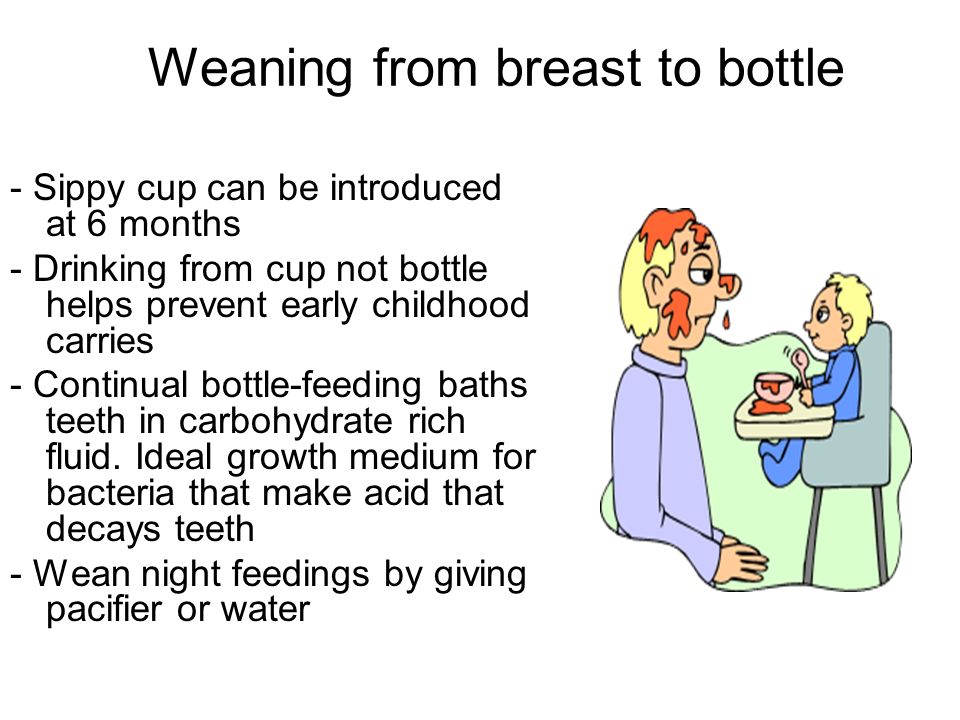
“But my baby…”: mother’s feelings of loss and guilt at weaning
My advice on weaning: you need to be sure you really want to teach your baby to bottle feeding. In the case of Gianna (see above), her fears that Justin was starving were not at all related to his physical condition. The mother felt guilty for making the child «suffer,» and I’m willing to bet she was ambivalent about the process itself.
Breastfeeding can be a very emotional experience for a mother, especially when she decides to return to her previous lifestyle. Nowadays, when breastfeeding is quite common, many women feel like bad mothers at the mere thought of weaning their baby from the breast. This is a double whammy for them. On the one hand, they see guilt behind them, and on the other hand, they feel a sense of loss.
I recently found a series of posts on my website in response to a question from a mother who had problems with her milk supply and feeding her baby for nine months. Deciding to «make it last until one year,» she felt guilty about «wanting a little freedom,» and wondered if anyone else had experienced the same thing. Poor thing! If only she knew how many women go through the same thing! I was happy to see that the moms who replied to her message made the same comments that I could have made.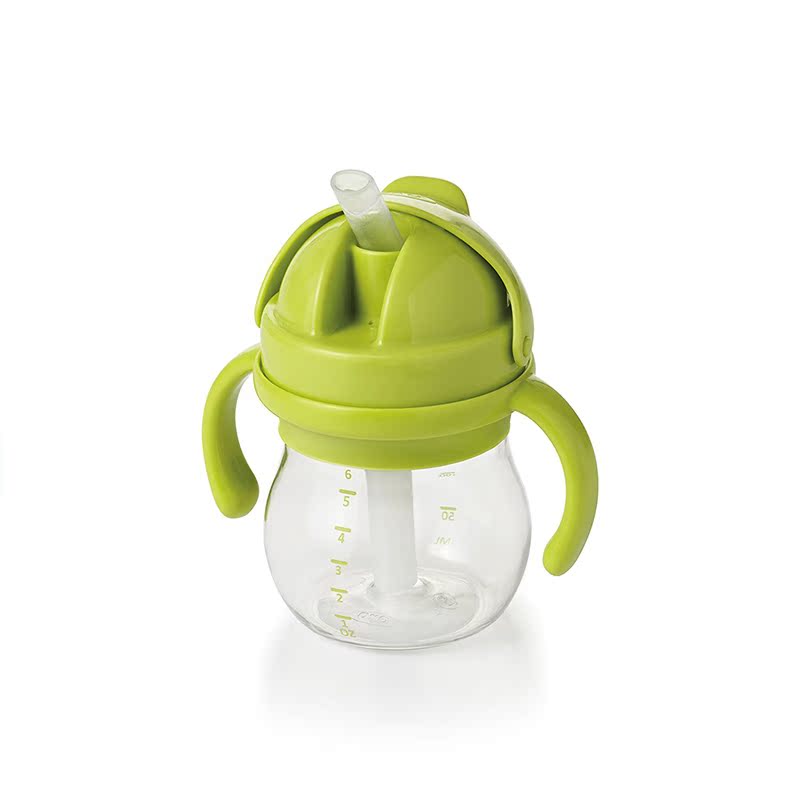
“In the end, you decide. You know what’s best for you and for the baby.»
“Nine months is wonderful. It is important to be convinced that you need to breastfeed at least for a while. I approve of those mothers who breastfeed, even for a very short time.”
“I have mixed feelings about this. On the one hand, I wanted to continue breastfeeding as long as possible. On the other hand, I wanted personal freedom and individuality. I wanted to be myself — Rosa, not Marina’s Breastfeeding Mom. When I began to wean the girl from the chest, I felt that we were losing intimacy. But at the same time, my breasts regained their former shape, I stopped worrying that my milk would leak. I no longer have to wear a bra at night. And the beloved husband again received admission to this zone!
Breastfeeding is an amazing experience for some mothers and I fully approve of it. But there comes a time when you have to end it. It may ease your guilt to know that you are weaning your baby not because you are tired of leaking milk or constantly pumping, but because the baby is growing and moving to a new level of development.
Non-spill mugs: «I’m already big!»
By the time you start thinking about introducing complementary foods, you should also be thinking about teaching your baby to a non-spill cup so he can make the transition from sucking milk through his mother’s nipple to drinking like big babies. And this is also one of the important milestones in the development process: the transition from feeding with someone else’s help to self-feeding. As I mentioned earlier, some breastfeeding mothers go straight from breastfeeding to using a non-spill bottle. Others introduce bottle feeding first, some earlier, some later, and then teach the babies to the mug.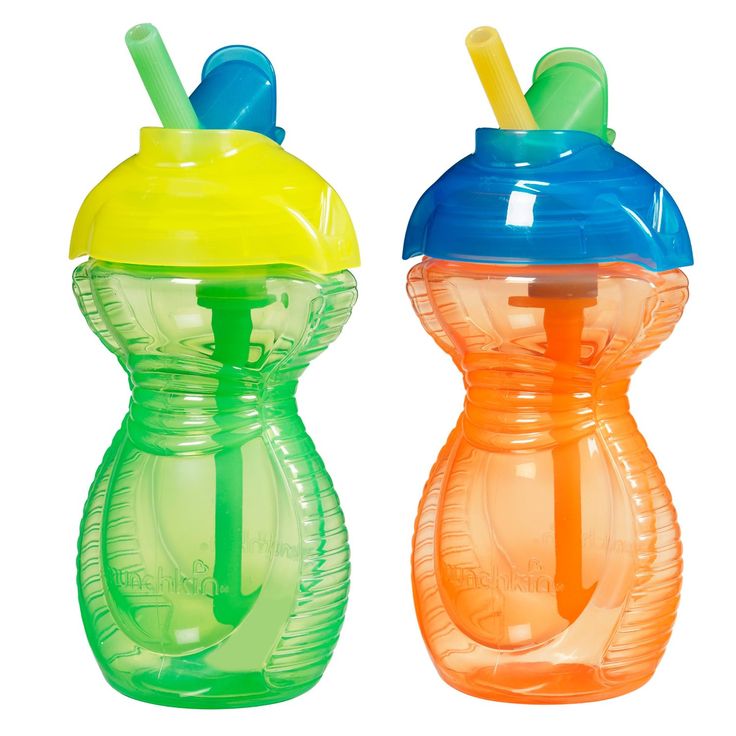
When a mother tells me that she can’t get her child to use a non-spill mug, I always ask how persistently she did it, what mistakes she made in trying to teach her child how to use it, and whether she expects instant results. As always, I ask my questions.
At what age did you first try to teach your child to do this? If your baby is breastfed and bottle fed at six months, try giving him a non-spill cup as well. You can also try offering him a paper mug or glass. But the best thing would be a non-spill mug, because it has a spout that controls the flow of liquid. Your baby can hold it himself, which develops his independence. (Never give a child a glass cup. This will only be done when the child is four or five years old. I have seen many children in emergency rooms with a glass cut on their lip or tongue.)
How often did you do this? You should give your child three weeks or a month of daily practice to get used to the non-spill mug.
Have you tried different types of mugs? Very few children start drinking from a sippy cup right away. If your kid didn’t like it right away, don’t forget that it’s still a new and unfamiliar subject for him. There are a lot of non-spill mugs on the market now — some with a spout, others with a straw. Regardless of which mug you buy first, try to get your baby used to it for at least a month. Do not rush to switch from one to another.
In what position do you hold your child when you give him a non-spill mug? Many parents put such a mug in the hand of the baby when he is sitting in a high chair or on a special seat with a pillow, and they think that he knows what to do with it. You should put the child on your lap, turning him to face away from you, put his hands on the handles of the mug and help him bring the mug to his mouth. This should be done quietly and calmly and only when the baby is in a good mood.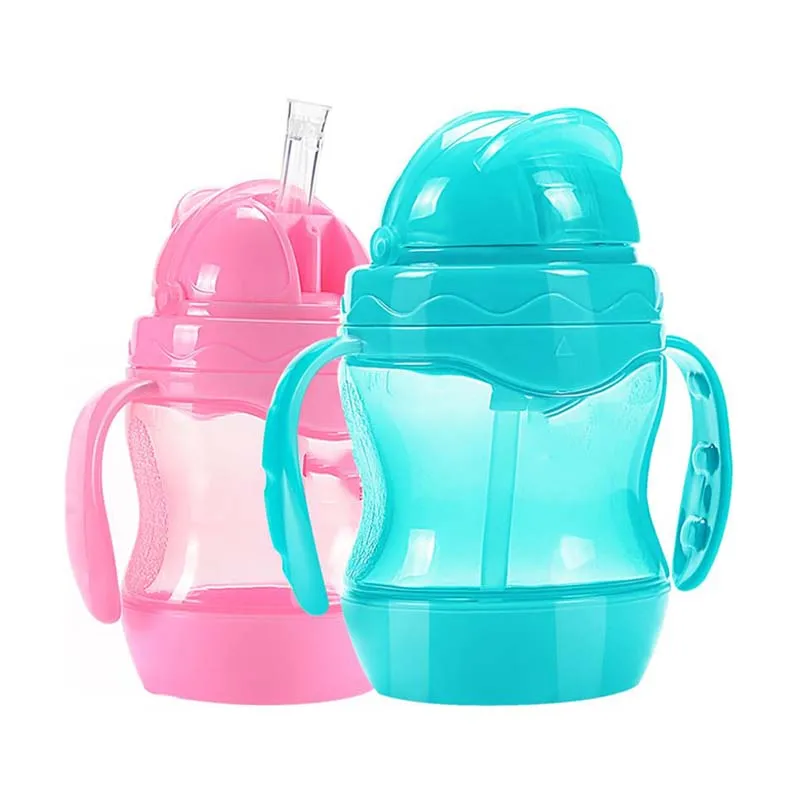
How much and what kind of liquid do you pour into the mug? Many parents do the wrong thing: they pour too much liquid into a non-spill cup and the child cannot hold it. I would recommend starting with no more than 25-30 grams of water, expressed milk, or formula. Do not give your child juice, he does not need additional sugar. In addition, in this case, you also risk that he will always associate a non-spill mug with a sweet drink and he will refuse others. Have you already made this mistake? The kid is already masterfully managed with a mug, but refuses to drink milk from it? In such a situation, you cannot abruptly refuse to use it — the child will be upset, and the mug will become associated with negative experiences. The baby may even become dehydrated (if he is already weaned and does not drink from a bottle). Start offering him two mugs during meals, giving him, say, juice or water in one, and 50-60 grams of milk in the second. After the baby takes a sip of water, set the first cup aside and try to give milk.
As with weaning, when you see a baby with a mug in his hand, you may be overwhelmed with mixed feelings, because now he will seem older to you. It’s okay, a lot of moms go through this. It’s time to hit the road and enjoy the journey.
Does my child need a non-spill cup? — Articles
In order to make life easier for parents, a cup is a very useful thing. With the help of a sippy cup, a child learns to drink by himself in sips, and parents will be protected from cleaning up spilled compotes and juices. The cup is very convenient not only for home use, but during walks and long trips.
How to teach a child to drink?
The choice of cup should be taken very seriously. It will allow your child to learn to drink on their own.
The handy baby drinker helps your baby to go from a bottle with a teat to a cup. If your baby is 6-7 months old and he sits, confidently holds his head, you can give him a drinker. First you need to give the baby an empty cup. The child will most likely take it for a toy and will twirl it, bite it, knock on the table. When the baby has played enough, you can pour some water into the cup and try to drink it through the spout.
Is the baby still not accepting the new way of drinking? Try to find a cup that he would like. You can offer your child several drinkers to choose from. You can seat several toys around the baby. Let a baby doll or a teddy bear «drink» some water. Then the kid himself will be able to pick up a container and give his pupils a drink, and may want to try it himself.
The right drinker for children is half the battle.
Varieties and characteristics of baby bottles.
All non-spill cups can be divided into several categories that indicate their characteristic features.
Cups with silicone (soft) spout — the best option for babies from 5 months, the spout perfectly imitates the breast or pacifier. It will resemble a bottle and at the same time will not harm the gums and teeth of the baby. The spout must have a hygienic cap. Soft silicone can be chewed. Often these are small and light products with ergonomic handles that will help to grip the cup more tightly. A non-spill cup with a plastic (hard) spout is bought for children from 7 months. The plastic base does not injure delicate gums. Such a non-spill has a special valve that opens only when the baby starts to drink, the liquid does not spill, no matter how you twist it and do not throw the cup.
Insulated cup keeps the set temperature well due to sealing and thickened walls. Keeps drinks cool in summer and hot in winter. Such cups differ from other models in their heavier weight. This is the ideal solution for long walks with the baby, they can maintain the temperature inside for several hours.
Cup with straw is recommended for use from 1 to 3 years. Such a cup is indispensable for children who cannot refuse a bottle. The soft tube is responsible for the uniform flow of fluid. Often these cups come without handles so that the child learns to hold the cup on his own. The disadvantage of this cup is in the tube, it has to be constantly changed. The fact is that traces of the liquid that the baby drank remain in the straw. But there is already a way out of this unpleasant situation. Special thin brushes for washing straws appeared on the market of children’s accessories — brushes of famous manufacturers Canpol, Baby Ono .
There are also tumbler drinkers. Roly-poly cup made of durable material. The special shape of the bottom of the cup allows it not to tumble and not spill the drink. They are quite practical, especially if your child has a habit of throwing everything that comes to hand on the floor. Such a bowl will always land on the bottom.
Very practical movable spout stoppers. When the «spout» is up — the child can drink, and when it is lowered — the liquid does not leak. Such non-spill lids are tightly closed and serve as a container.
What you need to know when choosing a cup?
- The shape of the cup should be comfortable for the child;
- It can be provided with handles;
- The cup should be easy to disassemble and wash;
- It is very convenient if the cup has a non-slip bottom.
When choosing a non-spill, pay special attention to the material of the product. This is perhaps the most important thing — it must be non-toxic. Small children require exceptionally high-quality tableware that is odorless and does not cause an allergic reaction. Drinkers are mostly made of plastic, but you should not smell it either when choosing a drinker, or even more so when using it. The material must be durable and preferably translucent so that both you and your child can control the level of liquid in the cup.
When choosing plastic cups, be sure to read the instructions and ingredients, as low-quality plastic can release harmful substances when heated.
It is important to pay attention to the volume of the cup:
- For the little ones, choose the 150 ml bowl;
- From 6 months to a year — 200 ml;
- For children over 1 year old, 300 ml or more.
Remember — the larger the bowl, the heavier it is. Do not forget about the weight of the product. The cup should be light, especially for six-month-old children, so that the baby can hold the cup on his own. They still have very weak arm muscles, and they simply cannot hold a heavy drinker. And a child from 1 year old can be offered a heavier drinker.
A baby cup should not only be safe, comfortable and practical, but also beautiful. If you choose the optimal color or print, the baby can be motivated, cheer him up.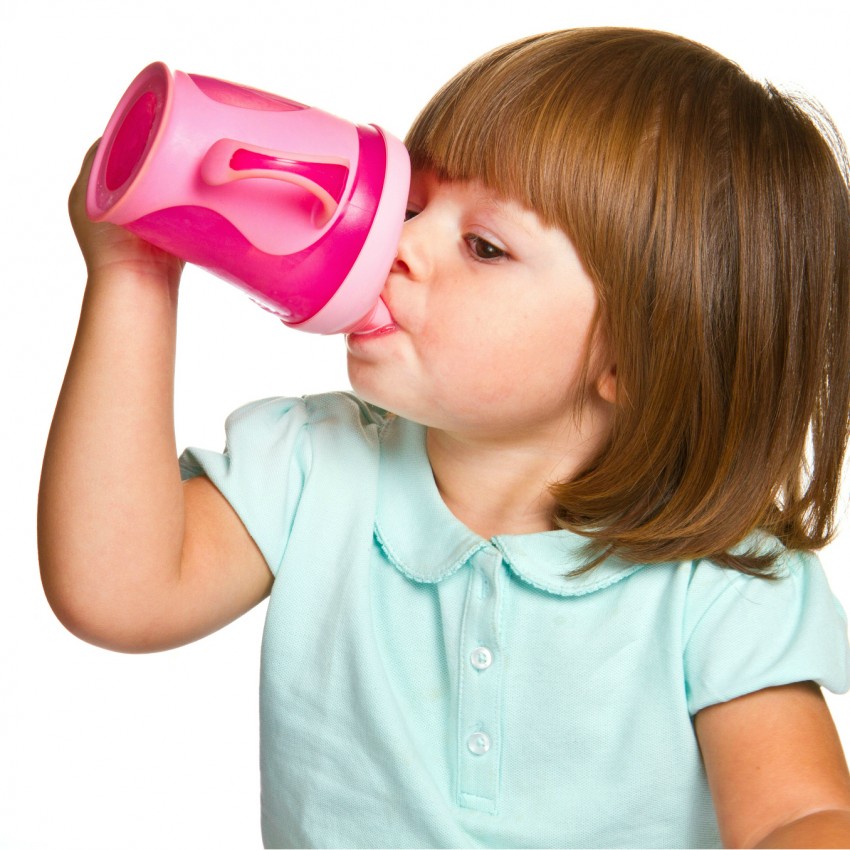
Instructions for using the cup.
- Wash cup and lid thoroughly before each use;
- Be sure to disassemble the cup with removable elements so that mold or residue of the previous drink does not form anywhere;
- Only add foods that are appropriate for the child’s age;
- A child should not be allowed to go to bed with a drinker;
- Do not add another product to the cup;
- If the child has not finished his portion, it is better to simply pour out the rest;
- Using a sippy cup is another step for your child’s development.
The most popular brands of baby drinkers.
Today, the choice of children’s tableware and accessories that can make life easier for a young mother is very large on the shelves of our stores. From the correct choice of a cup, depends on how successful and fast the result of the baby’s learning will be. Which is better to choose and buy a non-spill drinker?
When buying, pay attention to the rating of non-spill cups.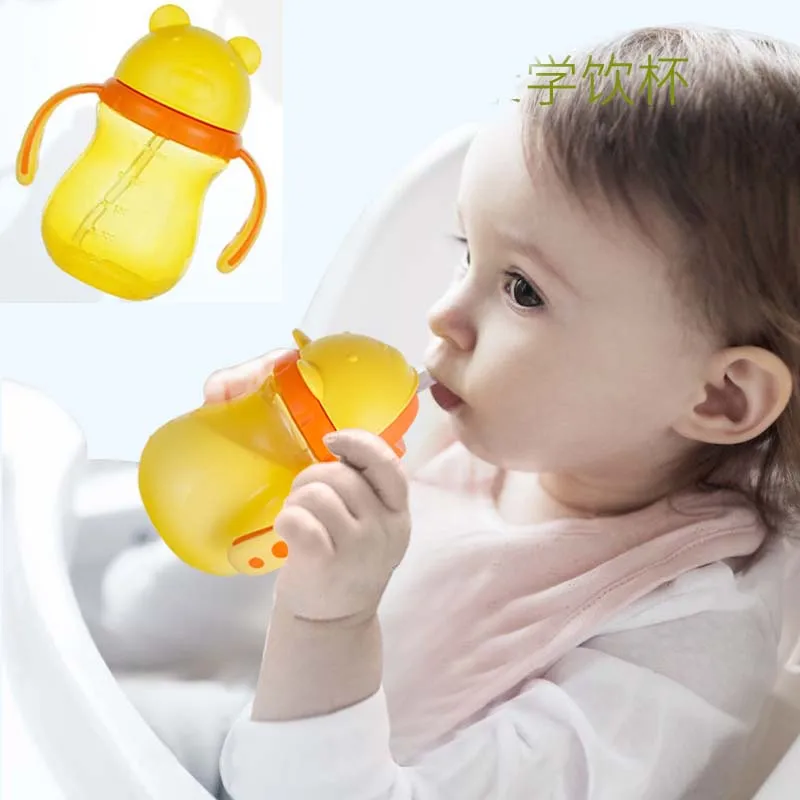
Good luck with your choice! And let your baby grow smart and healthy!
«I’m already big!» . Secrets of a sleeping mom. About sleep, feeding and communication with a baby from birth to kindergarten
By the time you start thinking about introducing complementary foods, you should also be thinking about teaching your baby to a non-spill cup so he can make the transition from sucking milk through his mother’s nipple to drinking like big babies.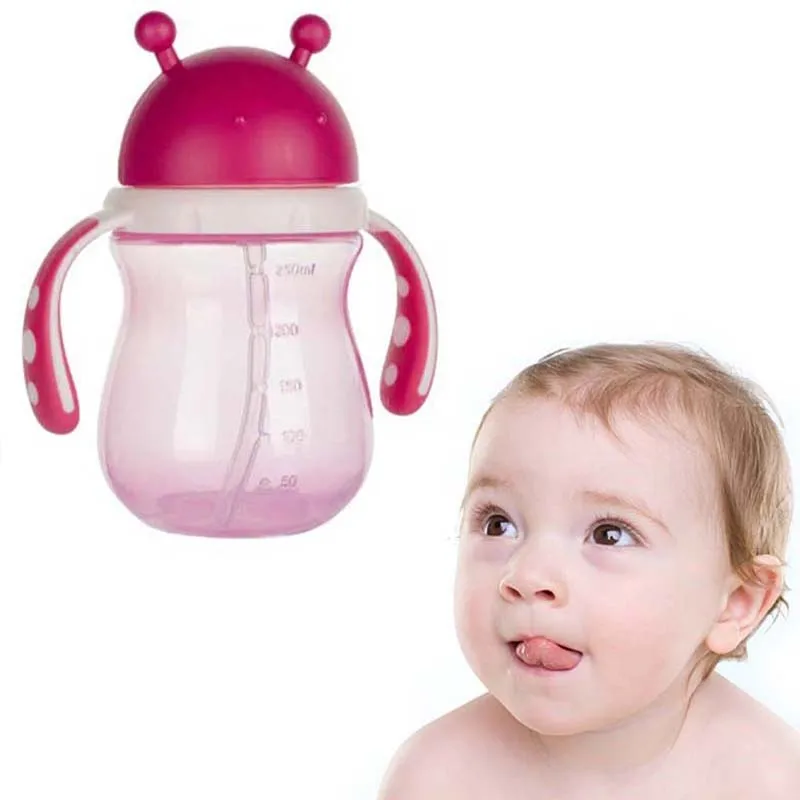
When a mother tells me that she can’t get her child to use a non-spill mug, I always ask how persistently she did it, what mistakes she made in trying to teach her child how to use it, and whether she expects instant results. As always, I ask my questions.
At what age did you first try to teach this child? If a baby is fed at the age of six months both by breast and by bottle, then it is necessary to try giving him a non-spill mug as well. You can also try offering him a paper mug or glass. But the best thing would be a non-spill mug, because it has a spout that controls the flow of liquid.
How often did you do this? You should give your child three weeks or a month of daily practice to get used to the non-spill mug. You will need more time if you do not do this daily.
Have you tried different types of mugs? Very few children immediately start drinking from a sippy cup. If your kid didn’t like it right off the bat, don’t forget that it’s still a new and unfamiliar item for him. Now there are many non-spill mugs on the market — some with a spout, others with a straw. Regardless of which mug you bought first, try to teach your baby to it for at least a month. Do not rush to switch from one to another.
In what position do you hold your baby when you give him a non-spill mug? Many parents put such a mug in the baby’s hand when he is sitting on a high chair or on a special seat with a pillow, and think that he knows what to do with it.
How much and what kind of liquid do you pour into the mug? Many parents do the wrong thing: they pour too much liquid into a non-spill cup, and the child cannot hold it. I would recommend no more than 25-30 grams of water, expressed milk or formula to start with. Do not give your child juices, he does not need additional sugar. In addition, in this case, you also run the risk that he will always associate a non-spill mug with a sweet drink and he will refuse others. Have you already made such a mistake? The kid is already masterfully managing a mug, but refuses to drink milk from it? In such a situation, you cannot abruptly refuse to use it — the child will be upset, and the mug will become associated with negative experiences.


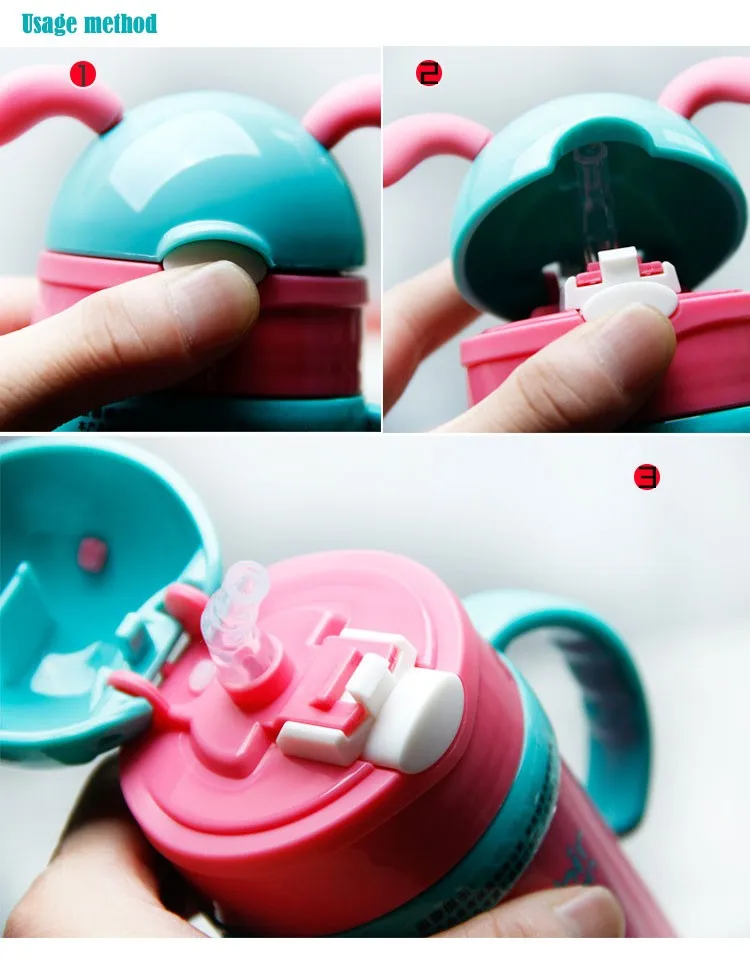 That will help you both get some sleep. It also gives your baby a chance to adjust to the new feeding method at a slower and perhaps more comfortable pace.
That will help you both get some sleep. It also gives your baby a chance to adjust to the new feeding method at a slower and perhaps more comfortable pace. You should avoid quenching the thirst of a child with a sippy cup when the child already displays a grumpy mood, is tired or hungry. If you try the sippy cup when the baby is moody, you should expect frustration and tears;
You should avoid quenching the thirst of a child with a sippy cup when the child already displays a grumpy mood, is tired or hungry. If you try the sippy cup when the baby is moody, you should expect frustration and tears;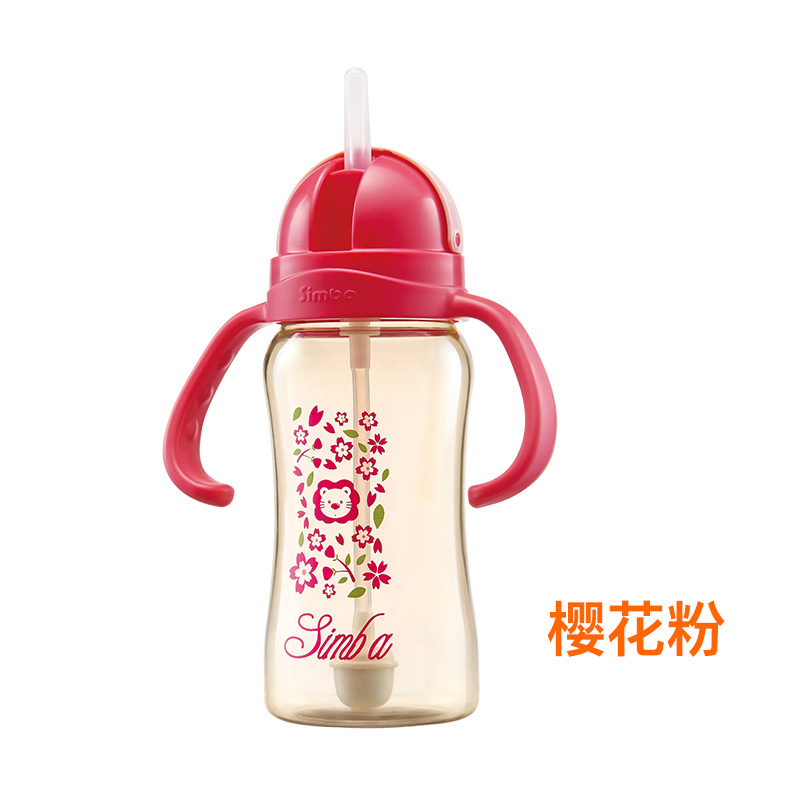 However, you may see plenty of biting and chewing going on;
However, you may see plenty of biting and chewing going on;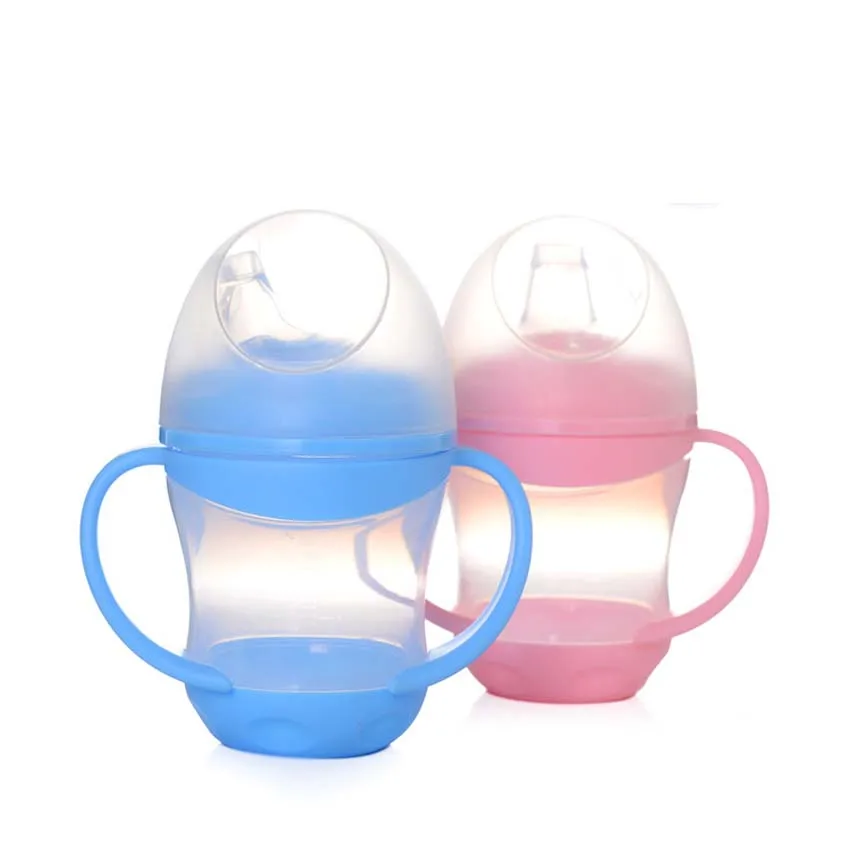 (More on this strategy below.)
(More on this strategy below.)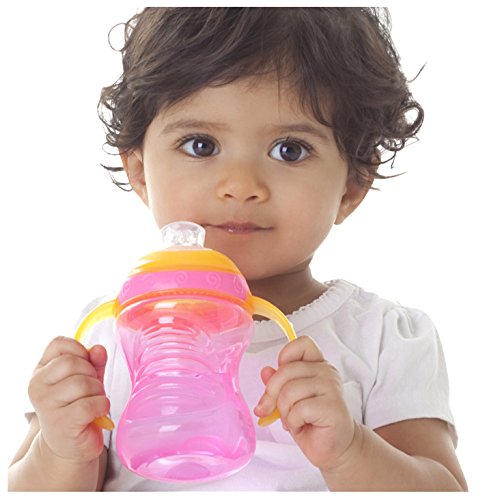 But spill-proof sippy cups can be as damaging to baby teeth as bottles, so try to only use them when your baby is first starting to use cups.
But spill-proof sippy cups can be as damaging to baby teeth as bottles, so try to only use them when your baby is first starting to use cups.
 Sometimes making a little sucking noise is all it takes to inspire a baby to start sucking. Then, give your baby their own cup to mimic your actions with.
Sometimes making a little sucking noise is all it takes to inspire a baby to start sucking. Then, give your baby their own cup to mimic your actions with.
